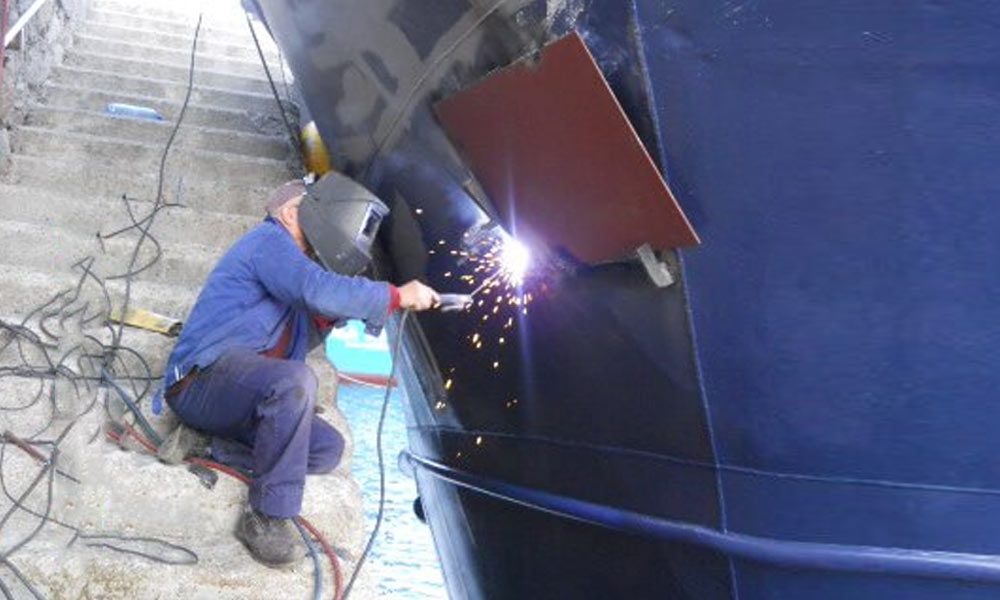
DEGIMA specialises in welding procedures to classifying societies. At DEGIMA, the most adequate welding procedure will be carried out, according to each project´s materials and specification used in the naval industry. The most frequent welding procedures are as follows:
- Shielded metal arc welding (SMAW)
In 1907 Oscar Kjellberg invented the coated electrode used in manual metal arc welding. An electric current, in the form of either alternating current or direct current from a welding power supply, is used to form an electric arc between the electrode and the metals to be joined. The workpiece and the electrode melt forming a pool of molten metal (weld pool) that cools to form a joint. As the weld is laid, the flux coating of the electrode disintegrates, giving off vapours that serve as a shielding gas and providing a layer of slag, both of which protect the weld area from atmospheric contamination.
Being a manual procedure, the ability and experience of the welder is essential.
- Gas metal arc welding (GMAW)
Gas metal arc welding (GMAW), sometimes referred to by its subtypes metal inert gas (MIG) welding or metal active gas (MAG) welding, is a welding process in which an electric arc forms between a consumable MIG wire electrode and the work piece metal(s), which heats the workpiece metal(s), causing them to melt and join. It is frequently used for mild steel on the hull of the ship (low carbon content) as well as stainless steel and aluminium superstructures.
- Gas tungsten arc welding (GTAW)
TIP TIG is a subset of gas tungsten or wolfram (it has the highest melting point of all the elements discovered, melting at 3.400ºC) arc welding (GTAW), using a mechanism called filler wire agitation. In the TIG welding procedure the used inert gases are argon, helium or a mix of both of them.
- Plasma arc welding (PAW)
This process is similar to the TIG one but using higher temperatures (28.000ºC). As a result, thicker pieces can be weld. Two kinds of gases are involved in the welding procedure: a central one (reaching a plasma state that melts the base metal) and a second ring (allowing extra protection).
- Flux-cored arc welding (FCAW or FCA)
FCAW requires a naked electrode, protected by a granulated powder called flux. Part of it melts and the rest can be reused. This is a high welding speed and automatized procedure that can be used for over 6mm plates, for this reason it is widely used in naval construction.
- Oxyacetylene welding
Using a welding torch with acetylene, the flame reaches a temperature of 3.500ºC. A stream of oxygen is then drained on the metal, burning it into a metal oxide with or without added material.
CONTACT US
PHONE: (+34) 942 25 51 82
ADDRESS: Avenida Juan Carlos I, Nº2
39600 Camargo. CANTABRIA
E-MAIL: info@degima.es

